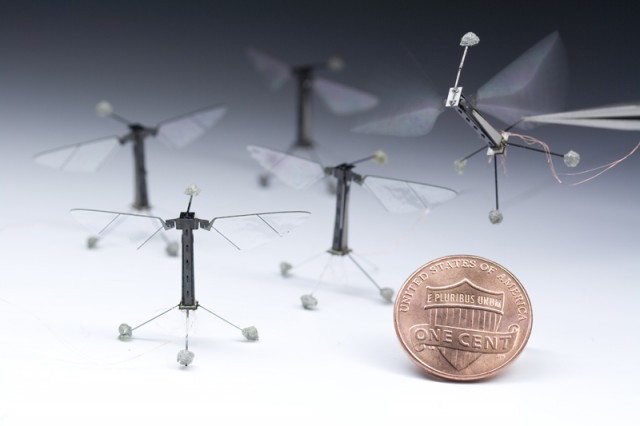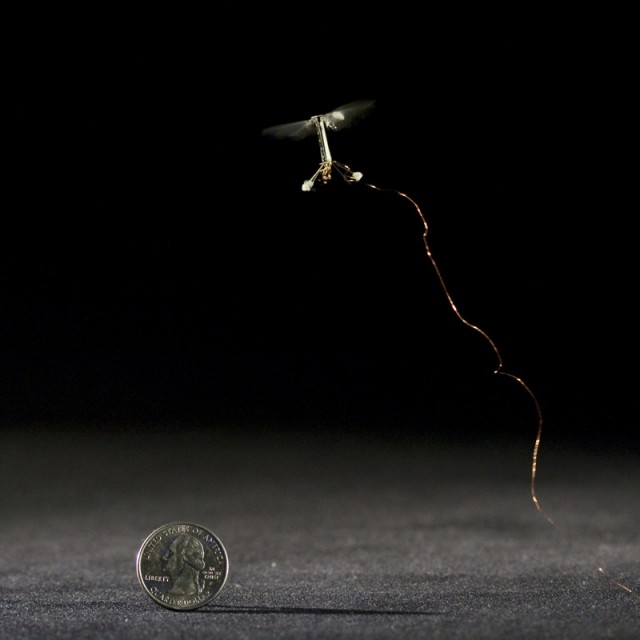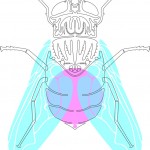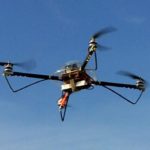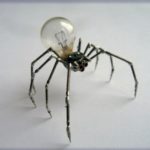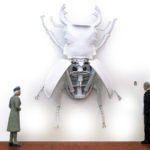Robotic Insects
For the first time in history, a controlled robotic insect has taken flight. A team led by researchers at the Harvard School of Engineering and Applied Sciences (SEAS) and the Wyss Institute for Biologically Inspired Engineering at Harvard have created RoboBees which can achieve vertical takeoff, hovering, and steering. The robotic insects are half the size of a paperclip and weigh less than 1/10th of a gram.
This achievement is the culmination of over 10 years of work across many laboratories at Harvard. A major challenge has been manufacturing parts at a such a small scale. “We had to develop solutions from scratch, for everything,” explains Robert J. Wood, principal investigator of the RoboBee Project. “We would get one component working, but when we moved onto the next, five new problems would arise. It was a moving target.”
Technical Design
The flight dynamics were inspired by the movement of a fly, with submillimeter-scale anatomy and two wafer-thin wings that flap 120 times/sec.
“The tiny robot flaps its wings with piezoelectric actuators—strips of ceramic that expand and contract when an electric

buy viagra super fluox-force online https://healthcoachmichelle.com/wp-content/languages/en/viagra-super-fluox-force.html no prescription
“
The control system had to be extremely robust due to the small scales in which the robot operates, and it all has to be mounted on board the flying insect. The team went through approximately 20 prototypes in the last 6 months, but thanks to a revolutionary Pop-Up Manufacturing Process, they were able to build reliable prototypes and test them aggressively.
Next Steps
“Now that we’ve got this unique platform, there are dozens of tests that we’re starting to do, including more aggressive control maneuvers and landing,” says Wood.
After that, the team will work to make the robotic insects fly autonomously and wirelessly. This is involve upgrades to the flight algorithms, power source, and several communication components.
buy cialis black online https://healthcoachmichelle.com/wp-content/languages/en/cialis-black.html no prescription
“This project provides a common motivation for scientists and engineers across the university to build smaller batteries, to design more efficient control systems, and to create stronger, more lightweight materials,” says Wood. “You might not expect all of these people to work together: vision experts, biologists, materials scientists, electrical engineers.
buy udenafil online https://healthcoachmichelle.com/wp-content/languages/en/udenafil.html no prescription
What do they have in common? Well, they all enjoy solving really hard problems.”
“I want to create something the world has never seen before,” adds co-lead author Kevin Y. Ma. “It’s about the excitement of pushing the limits of what we think we can do, the limits of human ingenuity.”
It will be exciting to see where this technology goes.
For a link to the paper published recently in Science, go here.
-RSB
Photos courtesy of Kevin Ma and Pakpong Chirarattananon
[via Harvard Gazette]

